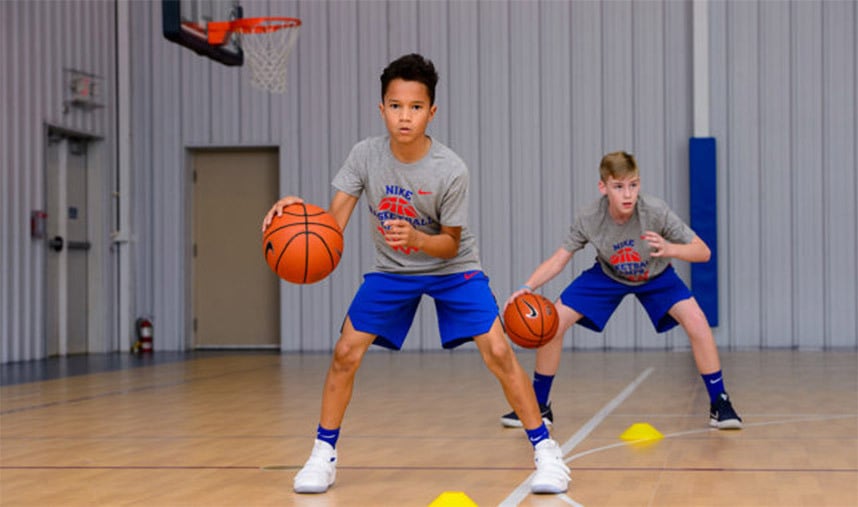An assist in basketball refers to a pass from a player to a teammate, resulting directly in a field goal. It is termed an “assist” because the passer helps the teammate score.
What Constitutes an Assist?
An assist is difficult to track because there are certain requirements and judgments involved with this statistic.
1. Dribbles
An assist in basketball occurs when a player passes the ball to a teammate who then scores a field goal. In cases where the recipient dribbles before scoring, the pass can still count as an assist if the player dribbles a “short distance.” While there isn’t a strict rule, it’s widely accepted that if the player takes 2 or fewer dribbles before scoring, it still qualifies as an assist. This helps maintain the flow and effectiveness of team play on the court.
2. Only 1 pass
In basketball, only the final pass that directly leads to a field goal counts as an assist. Unlike ice hockey, where multiple players can register an assist if several passes contribute to a goal, basketball awards an assist to only the player who makes the last pass before the basket. This ensures that the assist statistic is tied to the player’s direct involvement in setting up the score.
3. Free throws
In basketball, an assist is credited when a pass directly leads to a field goal. However, if a player is fouled while shooting and misses the shot, no assist is awarded, even if they later make both free throws. The exception to this rule exists in FIBA competitions, where an assist can still be credited if the player is fouled while attempting a shot, as long as they make at least one free throw. This ensures the pass is recognized as a key part of the scoring opportunity, even without the field goal being made.
Why are Assists Important?

Assists are crucial in basketball because they signify team collaboration and ball movement. When multiple players contribute to scoring, it makes the offense harder to defend. There’s no fixed percentage of field goals that must be assisted, as it depends on the team’s offensive strategy. However, if a team assists on over 60% of its made field goals, it generally indicates a strong, well-coordinated offense. High assist numbers reflect good teamwork and efficient ball distribution.
Ideas to Increase Assists on Your Team:
To increase the number of assists during a game, it’s important to focus on specific drills and strategies in practice. Here are some ideas:
1. Praise Great Passing
The #1 thing coaches can do to help their teams realize the importance of passing is to praise the pass just as much as the made basket.
From an early age, players tend to prioritize scoring over other aspects of the game. By recognizing and rewarding good passes, even if the shot doesn’t go in, coaches can shift the focus to teamwork and ball movement. This helps players understand that assists are just as valuable as scoring, fostering a more selfless approach to the game and encouraging unselfish play.
2. Ball-Handling Drills

It may seem simple, but a player needs to be able to see the floor to pass effectively to a cutting teammate. This is impossible if they’re focused solely on the ball while dribbling.
To spot scoring opportunities in time, players must handle the ball with both hands efficiently. Achieving this requires extensive ball-handling drills. A mix of 1- or 2-ball dribbling exercises, both stationary and while moving against air or defenders, helps players improve their ability to control the ball while keeping their eyes on their teammates and potential scoring chances.
3. Variety of Passing Drills

An assist relies on a well-timed and accurate pass that leads to a score, making the passing aspect crucial. Coaches should first help players understand the importance of passing on time and on target. Shooters prefer receiving the ball in their shooting pockets while squaring up, so passing with precision is essential. Additionally, players need to be able to execute these passes under pressure. Including defenders in passing drills makes them more game-like and adds the necessary challenge for players to improve.
Conclusion
Assists are challenging to achieve as they require both the passer and the scorer to perform. The passer must find a teammate with a scoring opportunity, and the scorer needs to finish the play. However, assists are a vital statistic because they show the team’s ability to create good scoring opportunities for each other. To rack up assists, players must work on their ball-handling, passing, and finishing skills. Generally, the more assists a team accumulates, the stronger their offense becomes.
